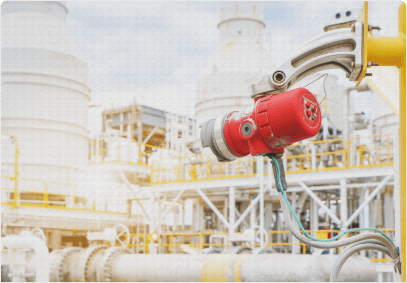The Single Strategy To Use For Roar Solutions
Table of ContentsThe Basic Principles Of Roar Solutions 6 Simple Techniques For Roar SolutionsLittle Known Facts About Roar Solutions.
In such an atmosphere a fire or explosion is possible when 3 fundamental conditions are fulfilled. This is typically referred to as the "dangerous area" or "burning" triangular. In order to secure setups from a prospective explosion a technique of evaluating and classifying a possibly dangerous location is required. The purpose of this is to ensure the right option and installment of devices to ultimately prevent a surge and to make sure safety of life.

No devices ought to be installed where the surface area temperature level of the tools is above the ignition temperature of the given risk. Below are some typical dirt harmful and their minimal ignition temperature level. Coal Dust 380C 225C Polythene 420C (melts) Methyl Cellulose 420C 320C Starch 460C 435C Flour 490C 340C Sugar 490C 460C Grain Dust 510C 300C Phenolic Resin 530C > 450C Aluminium 590C > 450C PVC 700C > 450C Residue 810C 570C The likelihood of the danger existing in a concentration high adequate to trigger an ignition will vary from location to location.
In order to classify this threat an installment is separated right into locations of threat relying on the quantity of time the hazardous is present. These areas are referred to as Zones. For gases and vapours and dirts and fibres there are three areas. Zone 0 Area 20 An unsafe atmosphere is extremely most likely to be present and may be present for long durations of time (> 1000 hours per year) or perhaps continually Zone 1 Zone 21 A dangerous ambience is possible but unlikely to be present for extended periods of time (> 10 450 C [842 F] A classification of T6 implies the minimum ignition temperature is > 85 C [185 F] Hazardous area electric tools possibly developed for use in greater ambient temperatures. This would certainly showed on the score plate e.g. EExe II C T3 Ta + 60C( This implies at 60C ambient T3 will not be surpassed) T1 T1, T2, T3, T4, T5, T6 T2 T2, T3, T4, T5, T6 T3 T3, T4, T5, T6 T4 T4, T5, T6 T5 T5, T6 T6 T6 A T Class ranking of T1 means the optimum surface area temperature level generated by the tool at 40 C is 450 C. Thinking the associated T Course and Temperature ranking for the devices are suitable for the location, you can always utilize an instrument with a much more rigid Division rating than required for the location. There isn't a clear response to this inquiry sadly. It actually does depend on the type of tools and what repairs need to be performed. Tools with certain examination treatments that can't be done in the field in order to achieve/maintain 3rd event rating. Need to return to the manufacturing facility if it is prior to the equipment's solution. Field Repair By Authorised Employee: Complicated screening may not be needed however details treatments might require to be followed in order for the tools to keep its third event ranking. Authorised employees should be utilized to execute the job correctly Fixing need to be a like for like substitute. New part must be thought about as a straight substitute requiring no special testing of the devices after the repair work is complete. Each piece of tools with an unsafe ranking must be evaluated separately. These are described at a high degree listed below, however for more thorough info, please refer directly to the standards.
The Buzz on Roar Solutions
The equipment register is a thorough database of equipment documents that consists of a minimum collection of fields to identify each item's area, technological criteria, Ex lover category, age, and ecological information. The proportion of In-depth to Close assessments will be figured out by the Devices Risk, which is assessed based on ignition risk (the probability of a source of ignition versus the probability of a flammable atmosphere )and the harmful area classification
( Zone 0, 1, or 2). Applying a robust Risk-Based Assessment( RBI )strategy is essential for ensuring conformity and safety and security in handling Electric Devices in Hazardous Areas( EEHA).
The Best Guide To Roar Solutions

In terms of eruptive threat, a dangerous area is an atmosphere in which an eruptive ambience exists (or may be expected to be existing) in quantities that require special safety measures for the building, installation and usage of equipment. electrical refresher course. In this short article we explore the obstacles dealt with in the workplace, the threat control procedures, and the required expertises to work securely
These compounds can, in certain problems, create eruptive ambiences and these can have major and tragic repercussions. Many of us are familiar with the fire triangular remove any kind of one of the three elements and the fire can not occur, but what does this mean in the context of harmful locations?
In a lot of instances, we can do little about the degrees of oxygen in the air, however we can have substantial impact on sources of ignition, for instance electrical devices. Hazardous areas are documented on the dangerous area classification drawing and are identified on-site by the triangular "EX LOVER" indication. Here, amongst other vital info, zones are divided into check 3 types relying on the risk, the likelihood and period that an eruptive atmosphere will exist; Area 0 or 20 is regarded the most dangerous and Zone 2 or 22 is considered the least.
Comments on “Facts About Roar Solutions Revealed”